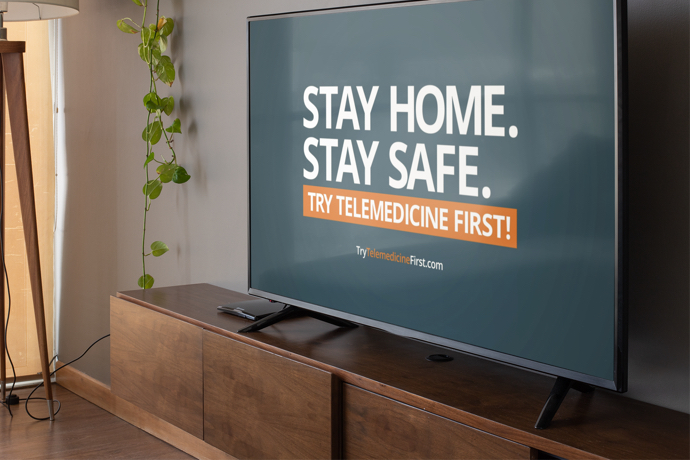Payvider Plan Outlook in 2023: Insights from Media Logic CEO David Schultz

Last year we published a blog post entitled, “The Payvider Trend: Why it is Surging and What it Means.” Due to the significant level of interest in the topic, we thought we should check in again with our CEO, David Schultz, to get his take on payvider plan trends today and where it’s headed.
Has the payvider trend continued to grow?
Yes, we’ve seen new payviders enter the market and I think we’ll continue to see more of that for several reasons.
First, it’s a logical model for providers to pursue given the ongoing emphasis on value-based care and the associated financial risks already borne by providers. If they launch their own insurance plan, they can control the premium revenue without having to share any savings with a payer. Of course, this comes with added risk, which is why some providers are choosing to partner with payers to form payvider plans.
And that leads me to the second reason I think the trend will continue. Regional payers are looking for ways to differentiate themselves from the nationals, and working in collaboration with a regional health system to create a payvider plan can help to do just that. The payers bring to the table the deep expertise and resources it takes to operate an insurance company, which can be very appealing to health systems.
And third – and perhaps most important – there’s evidence that the payvider approach can work if done right. Two great examples of this are Kaiser Permanente and Geisinger Health, which have successfully operated as payviders for many years, albeit with notably different approaches. Their recent announcement to join forces through the creation of Risant is likely to stoke further growth of the payvider model. According to their press release, their goal is to “expand and accelerate the adoption of value-based care…by acquiring regional and community-based health systems and putting them on Risant’s value-based care platform.”
Do you think that Bright Health’s recent decision to get out of the insurance business will dampen enthusiasm for the payvider model?
If you take a look at what Wall Street is saying, they’ll blame Bright Health’s failure on a flawed operating model, and I tend to agree. While I can’t speak to any back-office issues they may have been facing, from where I sit, their networks appeared to be narrow and often lacked the most popular health systems and providers in the regions they served. In addition, their brand strategy meant they had to invest significant resources into generating awareness and affinity for the Bright Health name or simply enter a market as an unknown. In the end, these challenges proved to be too much to overcome. So, getting back to the question, I think that others will learn from the Bright Health case study, but I wouldn’t expect it to necessarily dampen enthusiasm.
What are some of the marketing challenges facing payviders?
That starts with the branding of the entity and the network design. So, if the health system name is used and the provider network is limited to the employed providers, then they’ll need to convince consumers that they provide the complete range of high-quality services that a member would ever need. This can be a tough sell for some consumers.
If the health system name is used and the network includes outside providers, they’ll need to overcome the perception that their network is limited by emphasizing its full breadth. And if the entity uses a name other than that of the health system – which would likely come with a network of both employed and external providers – then they’ll need to invest more in marketing to create brand awareness.
Another marketing challenge arises from the concerns some patients may have about “the fox guarding the hen house.” The best way to address this is by conveying the integrity of the plan’s decision-making and the commitment to putting patients first. It can also help to talk about the benefit of doctors and insurance companies working together to reduce friction and provide a better member experience.
Ultimately, there are going to be certain individuals who are not comfortable with the payvider approach, and that’s just the reality.
What are the best marketing opportunities for payviders?
As a payvider, the hottest potential prospects are the people who already know and love the health system brand. Not every patient necessarily does, but there are those who are strong believers and supporters of a health system, and that’s where plans should focus.
We’ve seen success reaching patients through fully integrated, multi-touch marketing programs that make the most of the health systems owned media channels, while also being CMS compliant. Tactics may include:
- Provider affiliation notices – multi-drop direct-mail, email, phone
- Office signage – posters, flyers, window decals
- Cafeteria signage – tray liners, coffee cups, table tents
- Large-scale exterior signage – banners on parking garages
- Closed Circuit TV (may be provided by third-party)
- Content marketing
- Self-serve information kiosks
- Pop-up sales offices
- Permanent sales offices
- Electronic Health Record (EHR) system
In addition, it’s critically important to educate and engage employees, since they are the trusted front-line in healthcare. This should come from the top down and include both clinical and non-clinical team members. We’ve seen success through well-orchestrated programs that include intro/educational video from the health system CEO, town hall meetings, educational one-sheets and more.
Where do you think we’ll see payvider plans go from here?
This goes back to value-based care. Given the risk they’ve taken on, they need to continue to focus on improving patient outcomes by delivering the right care at the right time and in the right setting. To that end, I think you’ll see them focused on in-home healthcare services, remote patient monitoring and telehealth – especially in the area of mental health. These all provide ways to deliver care to patients where they are, which is different than the traditional provider business model that has required patients to go to them.
How can I learn more about marketing best practices for payvider plans?
The topic of payvider plan trends is one we’ll continue to pay attention to throughout 2023, so stay tuned for more relevant information on our blog. In the meantime, you can check-out this case study, “Payvider Playbook: Creating (and launching) a new kind of Medicare Advantage plan“, as well as this blog post, “3 Content Marketing Tips for Payvider Health Plans.” Of course, you can also connect with us by contacting Jim McDonald, head of strategic growth, at 518-940-4882.









